The Kochi-Muziris Biennale, which began on December 12 and will end on March 29, 2019, is arguably one of the most prestigious art events in the subcontinent.
Kishore Singh takes you through the flurry that preceded its launch.
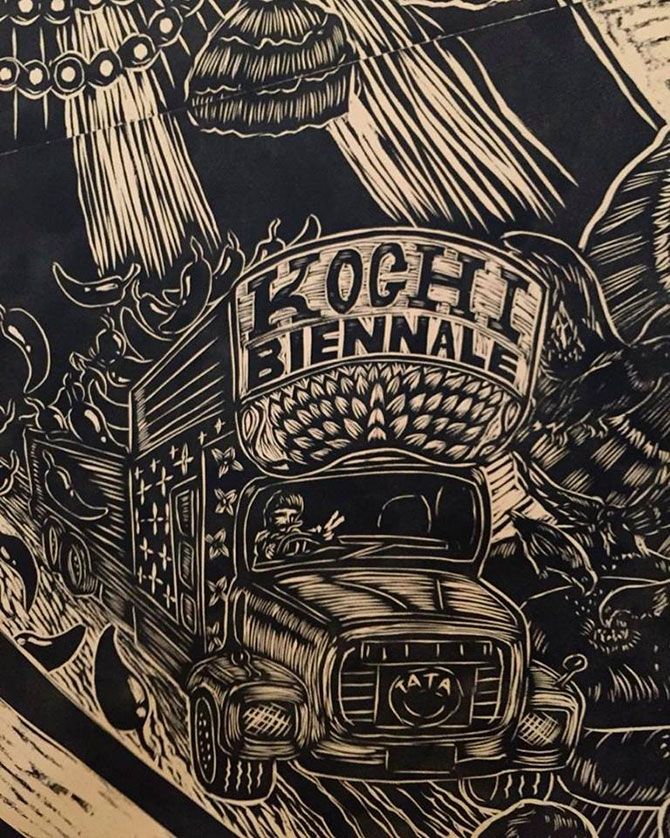
Things in Kochi, Ernakulam and Mattancherry are getting frenetic with hundreds of volunteers pulling all-nighters ahead of the opening of the fourth edition of the Kochi-Muziris Biennale.
The largest art event in the country, the biennale is now well-settled and established, give or take the usual hiccups that occur ahead of any major event -- late arrivals of art works, printing delays, the predictable, if unexpected, hitches when things break down or don't go strictly according to plan.
Despite all the preparation and Excel sheets, schedules will change, projects will teeter on the edge, tempers will fray.
And then, like a well-choreographed ensemble, it will all come together for one large, ceremonial opening.
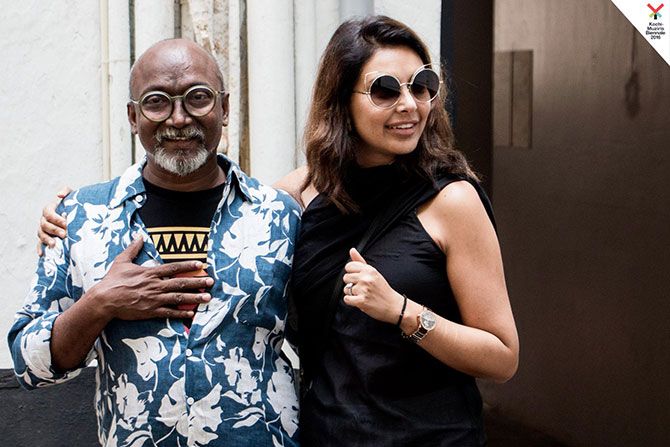
On the morning I call Bose Krishnamachari, co-founder of the biennale, he's just woken up from a fatigued, early morning site visit where a 3,000-kg installation by Denmark-based E B Itso has been placed on location.
"We're working day and night," he tells me, "to be ready."
A little later, in a phone call with Anita Dube, the curator of the fourth edition, I prove less lucky.
Some works that were shipped late from New Delhi have not yet arrived and she is on edge.
Complications such as this add to the crackling energy in the humid air of Kochi.
There's work to be done, the hours are few, Dube isn't in the mood to be chatty.
"Anyway," she says, and, again, "anyway."

Krishnamachari is all praise for Dube.
"She's working with all the artists," he says of the installations and mountings underway at the various venues.
"She's really involved in all 90 projects."
As curators should, of course, but Dube is special in more ways than one.
She is the first woman curator of the biennale, and there was a great deal of speculation whether women artists would find a greater representation.
"Women artists are 50 per cent plus in terms of participation," explains Krishnamachari, but Dube is quick to correct the perception that it is not mere representation that she was looking for.
"The audience will get a sense of what women's role has been in the production of art," she explains.

Begun in 2012, the Kochi-Muziris Biennale was quick to claim its place in an overcrowded global art calendar not merely as an 'Indian' event but, more importantly, given its choice of artists and the nature of their work, an international one.
The first edition had proved hard, given the scepticism and the lack of understanding of what a biennale (apart from its periodicity) represented, but all that dispersed with the goodwill and positivity that surrounded it.
Editions two and three have had their supporters and detractors, but there is no gainsaying that it has become, with the Dhaka Art Summit, one of the most critical art events in the subcontinent.
And instead of getting easier, each edition has had to work harder to prove itself.
The International Biennial Association held its fifth general assembly in Kochi on December 17. “That says a lot for how relevant the Kochi-Muziris Biennale has become,” Krishnamachari tells me.
Relevant enough to draw the attention and support of art institutions, for one.
And for the third time, the Students Biennale, developed by KMB, the Foundation for Indian Contemporary Art and Foundation for Indian Art and Education, will coincide with KMB.
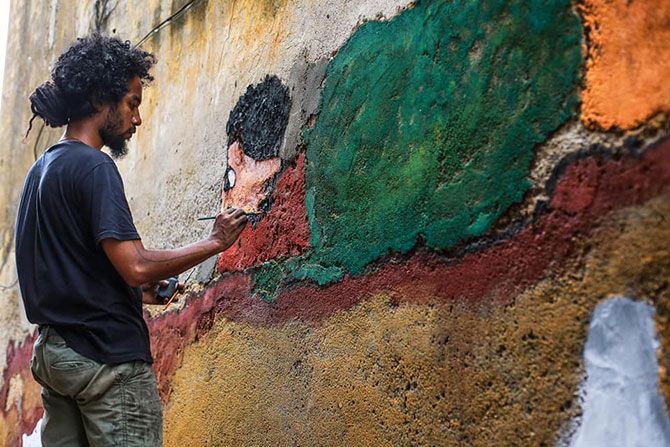
Over time, the biennale has also come to be associated with a number of projects in the state to empower both art education and outreach as well as programming that has grown to include cinema, music -- even food.
Along with books in braille and a vigorous outreach programme tying in educational and corporate institutions in Kerala and elsewhere, the biennale itself remains at the hub of such initiatives.
"There's a Knowledge Laboratory for instance," Dube tells me, "for everyone to share in."
Here, visitors and guests can share whatever they choose, whether a poem, a story, a lecture, "anything at all", Dube says.
Besides promoting a keen engagement with the arts, it helps people participate in an activity not usually encouraged in Indian institutions or museums.
Though not located in Aspen Hall, the main hub for biennale activities, the Knowledge Laboratory is close enough for people to walk across to.
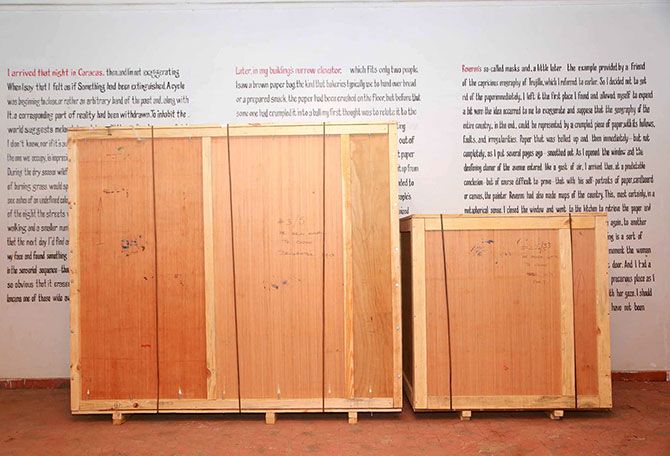
No matter the collaborations and collateral events though, it is art which remains central to the biennale and has been the reason for its astonishing success -- chiefly among people one wouldn't have thought gave a hoot for art.
Unlike museums, or galleries, the venues do not intimidate; and a number of projects are on public display.
The advantage of an art-uninformed public is that it does not come with any pre-conceived notions, and therefore all engagement with art -- and artists -- is at a level of honesty that can prove humbling.
This edition's overarching theme, which deals with alienation in society, should strike a particularly poignant chord not just given India's realities but also a rapidly changing, increasingly selfish world.
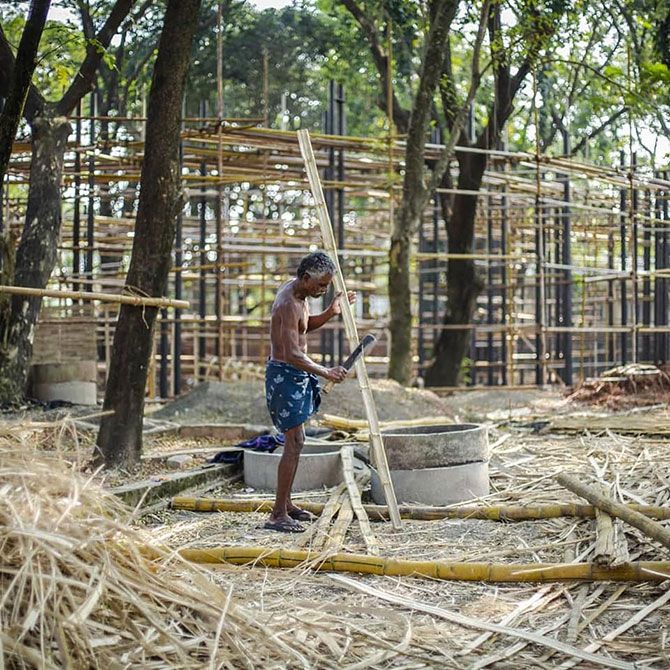
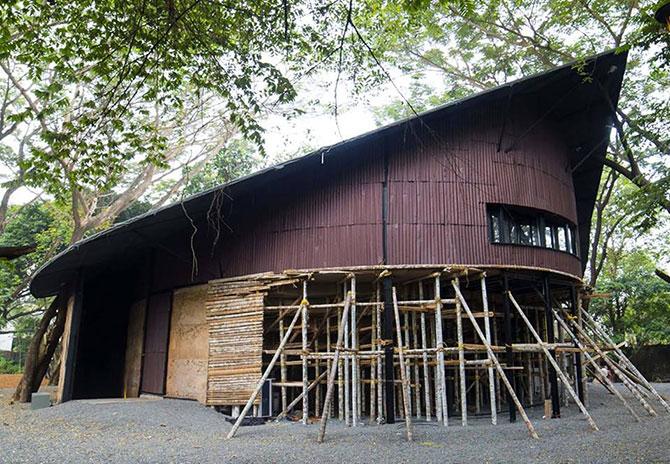
For a while, following the devastation caused by floods in Kerala, the state's recovery had seemed vulnerable, causing art lovers to worry over the biennale being cancelled, a fear Krishnamachari was quick to dismiss.
Fittingly, then, KMB is organising a fundraiser, ARK (Art Rises for Kerala) in January in Kochi, a live auction, the proceeds of which will go to aid those affected by the disaster.
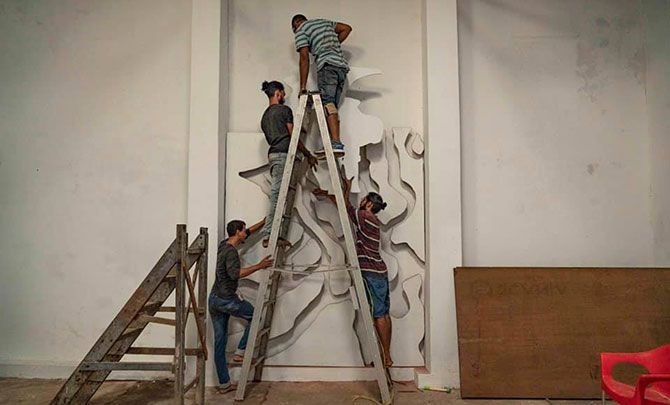
Art has been neglected for so long in the country, nobody could have thought the biennale could also provide a boost for tourism.
Not only has it established Kerala on the art tourism circuit, keen aficionados now pick their dates to coincide with the biennale.
Perhaps it is just a coincidence that Kochi, like Venice -- the site for the world's most popular, as well as oldest, biennale -- is built on the waterfront, with a network of waterways and canals that evokes comparisons.

It helps, of course, that the three-month biennale coincides with other art and related activities around the same time -- Serendipity Arts Festival in Goa (December 15-22), Jaipur Literary Festival (January 24-28, 2019) and, of course, India Art Fair in Delhi (January 31-February 3, 2019).
Domestic tourists now plan their trips to be in both Kochi and Goa, while international visitors to New Delhi are not averse to planning a trip to Kochi, which offers them the opportunity to look at and reflect on matters around art in one of the most sought after tourist destinations in the world.
Kochi-Muziris Biennale opened on December 12 with a curatorial walk by Anita Dube, followed by a formal opening ceremony in the evening.
Some more glimpses

For her, art is the means and not the end. Through her drawings she creates points of deliberation around the personal and the political.
Photograph: Kind courtesy KochiMuzirisBiennale/Facebook.com
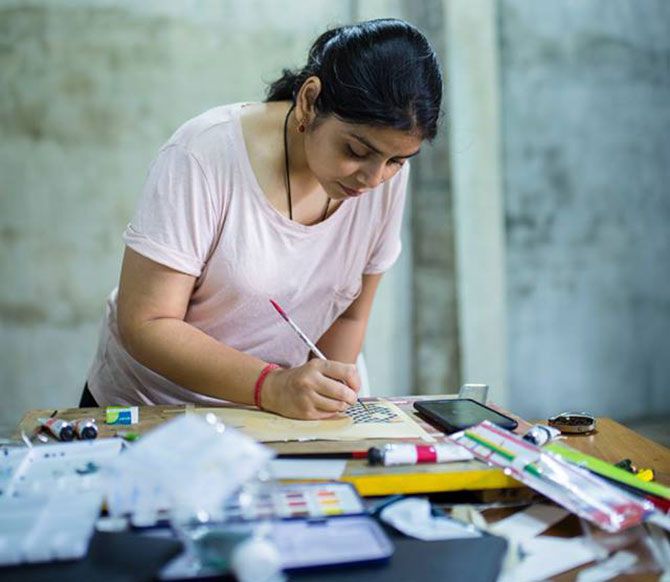
Pallavi's practice is research-based, where society functions as a 'social laboratory'.
Her method blends observation, conversation, travelling and personal experiences. She is interested in art as a way of thinking and understanding the world, which includes the perspective of the spectator.
She is currently exploring the grooming culture amongst Indian men, reflecting on changes that commercialisation brought in the role of the traditional alpha male.
Photograph: Kind courtesy KochiMuzirisBiennale/Facebook.com
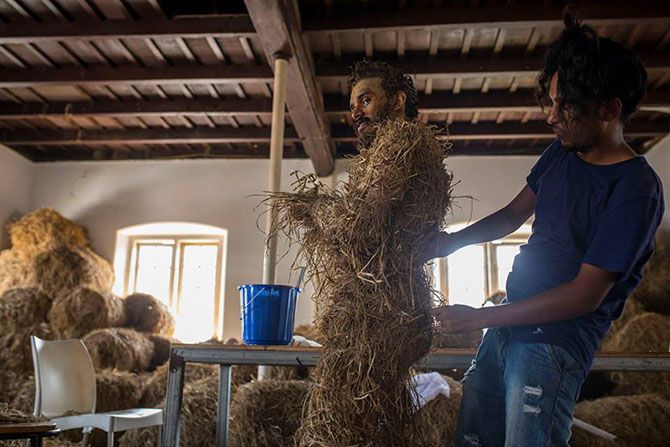
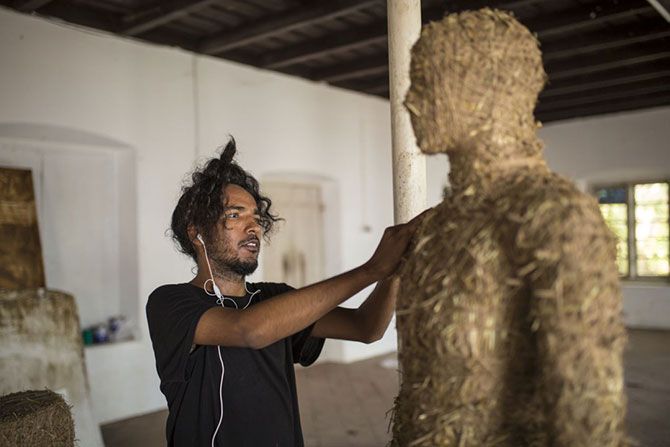
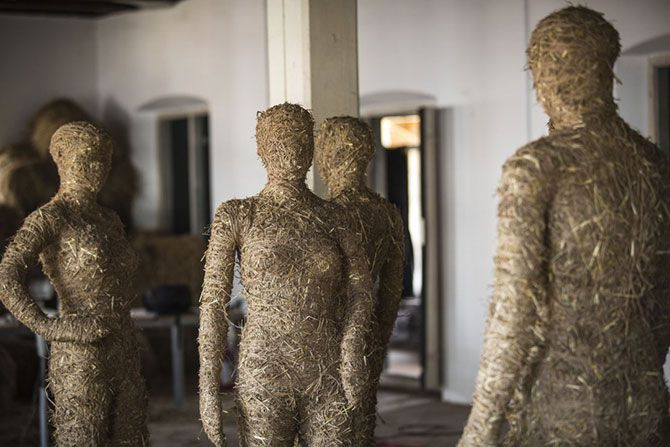

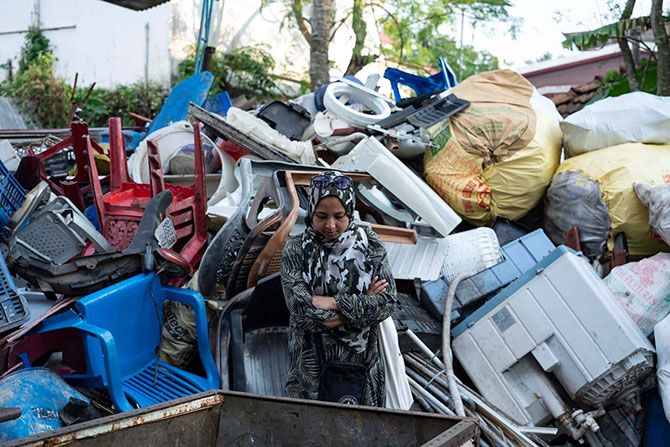
For the complete programme, visit kochimuzirisbiennale.org











